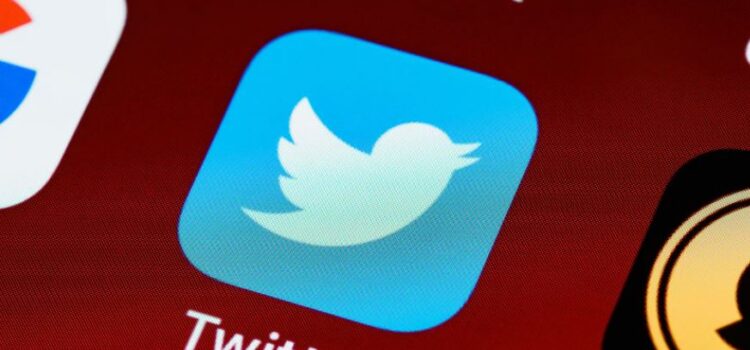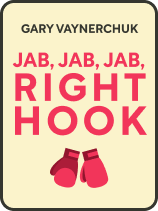

This article is an excerpt from the Shortform book guide to "Jab, Jab, Jab, Right Hook" by Gary Vaynerchuk. Shortform has the world's best summaries and analyses of books you should be reading.
Like this article? Sign up for a free trial here .
Do you want a Twitter marketing strategy to help boost your business? What notable features set Twitter apart from other social media sites?
Twitter is a microblogging platform with millions of users. It’s the perfect place to build your brand’s name because it is almost completely public, even people who don’t have Twitter accounts can view your tweets. That’s why you should develop a Twitter marketing strategy for your business.
Keep reading for advice on Twitter marketing strategies.
How to Develop a Twitter Marketing Strategy
Note: The information in this article is from the book Jab, Jab, Jab, Right Hook by Gary Vaynerchuk. The book was published in 2013 and some statistics and information may be out of date but the advice is still valuable.
Like Facebook, Twitter is a popular social media site with a large audience. Twitter is a microblogging platform and posts are called “tweets.”
The audience: As of December 2012, there were 500 million Twitter users worldwide. 750 tweets are posted per second.
Who uses it: The Twitter demographic is young and urban.
Why they use it: Twitter is mainly used to share information and news.
Notable Features
Twitter has several features that distinguish it from other social media platforms:
Feature #1: Mobile friendly. Twitter is one of the most mobile-friendly platforms.
Feature #2: Very public. Twitter is almost completely public. This is one of the big reasons you should put time into a Twitter marketing strategy. Most tweets are public to the entire internet, even to people who don’t have accounts, and anyone who does have an account can usually talk to anyone else with an account, regardless of whether or not they’re following each other. (On Facebook, Instagram, and Tumblr, you can only talk to people once they’ve decided to follow you.)
Feature #3: Huge potential for community engagement. Because Twitter’s so public, in addition to responding to customer’s tweets about your brand, you can initiate conversations with potential new customers as part of your Twitter marketing strategy. Twitter’s search engine is powerful and you can use it not only to find people directly talking about your brand but people talking about things only distantly related to you.
- For example, one day a man named Levi Lentz tweeted to say that Michael Franti’s “Say Hey” was one of his favorite songs. Green Mountain Coffee responded to the tweet to say that they loved it too. There was a connection between Green Mountain Coffee and Franti—they were working on a fair trade campaign—but it wasn’t public yet, so it looked to Lentz like the coffee company just wanted to have a conversation. (In Twitter culture, it’s not unusual to spontaneously talk to people you’ve never met.) Eventually, Lentz brought up coffee. Green Mountain gave him coffee recommendations and mailed him a Michael Franti CD. Lentz wrote about the encounter in his blog and the company sent him a thank-you note, coffee sample, and mug. All of this engagement stemmed from a tweet Lentz never expected to start a conversation with a brand.
Feature #5: Retweeting features. On Twitter, you can retweet (reshare) other people’s tweets. This allows you to rework other people’s content instead of having to come up with your own.
Feature #6: The importance of context over content. Like Facebook, there’s an overwhelming amount of content on Twitter, and if you’re only tweeting about your products, you’re not going to stand out. You can stand out by putting your own spin on the news and augmenting existing content with commentary, humor, or voice. People want escapism and entertainment—information that’s also entertaining.
- For example, say you run a bookstore. When a newspaper releases a review of a book you sell, you might tweet a sentence along the lines of, “Check out this review of The Italian Pig from The New York Times” and include the link to the review. Or, you could write something like, “The New York Times loves it. We hate it. Find out why.” This tweet would be linked to your blog, which would have the full text of the review and your thoughts on it. (The author writes that criticizing something he sold never hurt his sales when he was in the wine business; in fact, it made people trust him.)
Feature #7: Trend-tracking features. Trends are words, topics, and hashtags that are popular at any given moment. You can use settings to track trends (at levels ranging from regional to worldwide) and then use that knowledge to post timely content with appropriate context. Trend tracking is an important Twitter marketing strategy.
- For example, the day after the finale of the TV show 30 Rock, the show’s name was trending. A brand could have told their story within that context by looking trend tracking and looking for a connection between themselves and the show. The show aired for seven years, so any company with the number “seven” in their name, for example, 7 For All Mankind, might have used that connection to show that they were aware of the things their fans were interested in. 7 For All Mankind missed the opportunity, though—their Twitter page that day was full of brags, right hooks, and some customer engagement.
Common Mistakes With Twitter Marketing
In addition to missing opportunities, there are two common mistakes people make with Twitter. These are the overuse of:
- Pushing content. Most marketers tweet links to content that’s somewhere else, such as their blog. This doesn’t make use of Twitter’s unique features or give users the type of content they want.
- “Birdiebragging.” Birdiebragging is a term the author came up with to describe bragging by retweeting nice things your customers have said about you. Few people find bragging to be engaging content.
Paid Advertising on Twitter
Twitter provides paid advertising that you can use to boost the visibility of your brand, in the form of promoted tweets. Promoted tweets are clearly labeled “Promoted” and are given more visibility than other tweets, for example, by appearing at the top of relevant search pages. Paid advertising is an obvious Twitter marketing strategy, but useful nonetheless.
Like any tweet, a good way to use a promoted tweet is to find a link between a trending hashtag and your brand. For example, on National Wear Red Day, #GoRed was trending, and Tide bought a promoted tweet that referenced the color-saving features of its detergent.

———End of Preview———
Like what you just read? Read the rest of the world's best book summary and analysis of Gary Vaynerchuk's "Jab, Jab, Jab, Right Hook" at Shortform .
Here's what you'll find in our full Jab, Jab, Jab, Right Hook summary :
- Why creating strong social media content is like boxing
- How the rise of social media has brought many changes to marketing
- How to build a connection and then convert a sale






